
Politics and religion are two topics that generally elicit a strong response when they come up in conversation. These are also two topics in which I rarely participate.
Call me crazy, but I’ve found that when it comes to these polarizing subjects, people already have their minds made up about both, and nothing I say is going to sway them.
But there is one topic where I will always voice my opinion. Even to complete strangers. (Much to the mortification of my children.)
And I have very strong feelings about this topic.
You could probably get me to switch political parties and join a new religion before you could sway me on this topic. I have held this view my entire life, and it is immutable. If you should find my belief offensive, I can only apologize and ask you to keep an open mind or be willing to agree to disagree.
Fake Christmas trees suck.
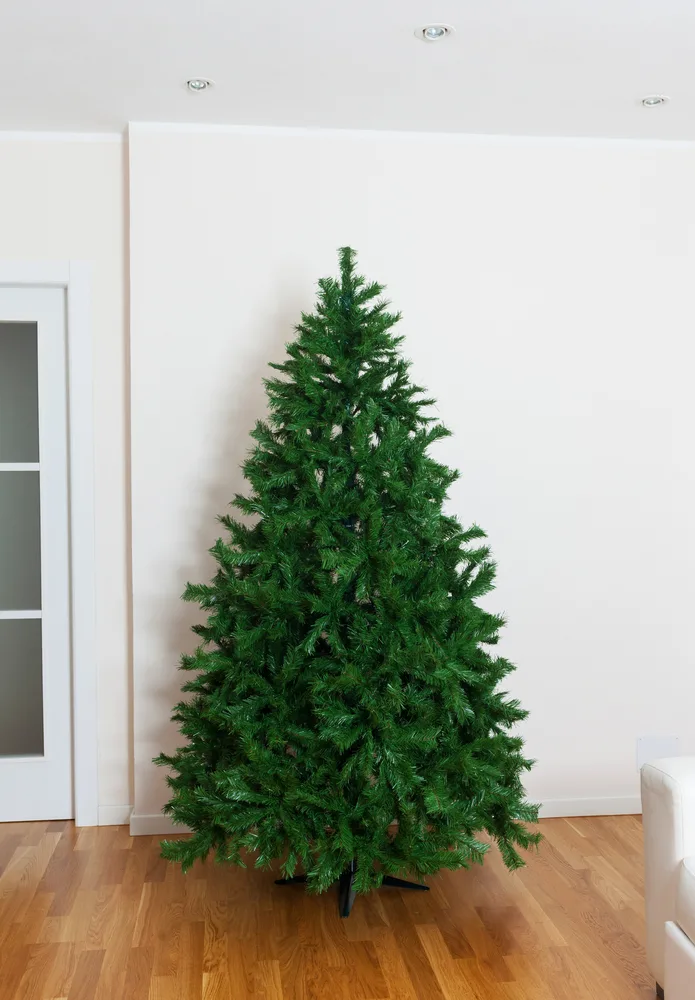
Yup, I said it. Give me a real tree, or give me death.
When December rolls around, you can find me at one of the local Christmas tree farms hunting for the perfect tree.
And it’s got to be perfect.
It has to be full and just tall enough so that the star is only an inch or two from the ceiling. It has to have strong branches for heavy ornaments. And a few sparse spots are a must for larger ornaments. All of this means it ends up being obscenely huge.
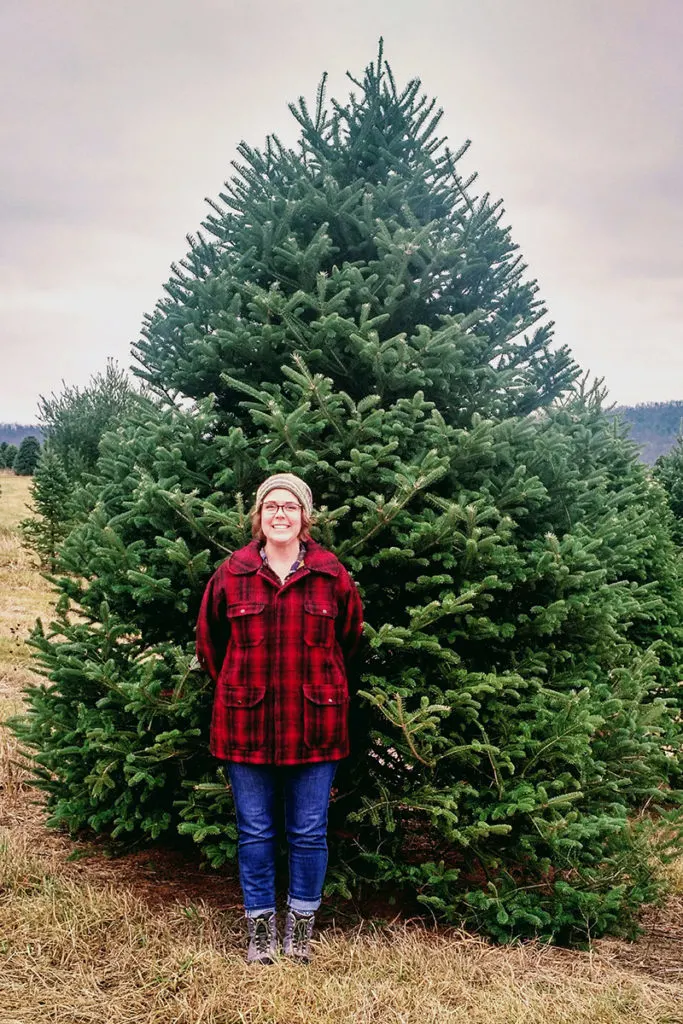
(It fit. Just barely, but it fit.)
Oh, you can’t see the TV because the Christmas tree is in the way? Here’s a copy of War and Peace that should keep you busy until the holidays are over.
I was indoctrinated with this mania since I was a child.
You can blame my mother, who was also a real Christmas tree fanatic. I have since handed this torch on to my adult daughter as she celebrates her third Christmas in her place, with her third real Christmas tree.
(My boys could care less about the tree; they’re more concerned with what’s under it. But I’m still holding out hope; they’re young, there’s still time.)
In our family, part of the search criteria when looking at a new apartment or home is the size of the Christmas tree you could fit in the space. “Wow, you could fit a huge tree in here,” is the highest compliment to a family member who has just moved into a new home.
The reason I’m telling you all of this is so you can see that when it comes to the question of a real or artificial Christmas tree, I am hopelessly biased.
So, why don’t we skip this entirely, and you just trust me when I say real is better.
I’ll tell you why, because when you’re done reading, I want you to feel good about your choice to get a real Christmas tree, shedding needles and all. And also because it’s my job to entertain you, and I love doing my job.
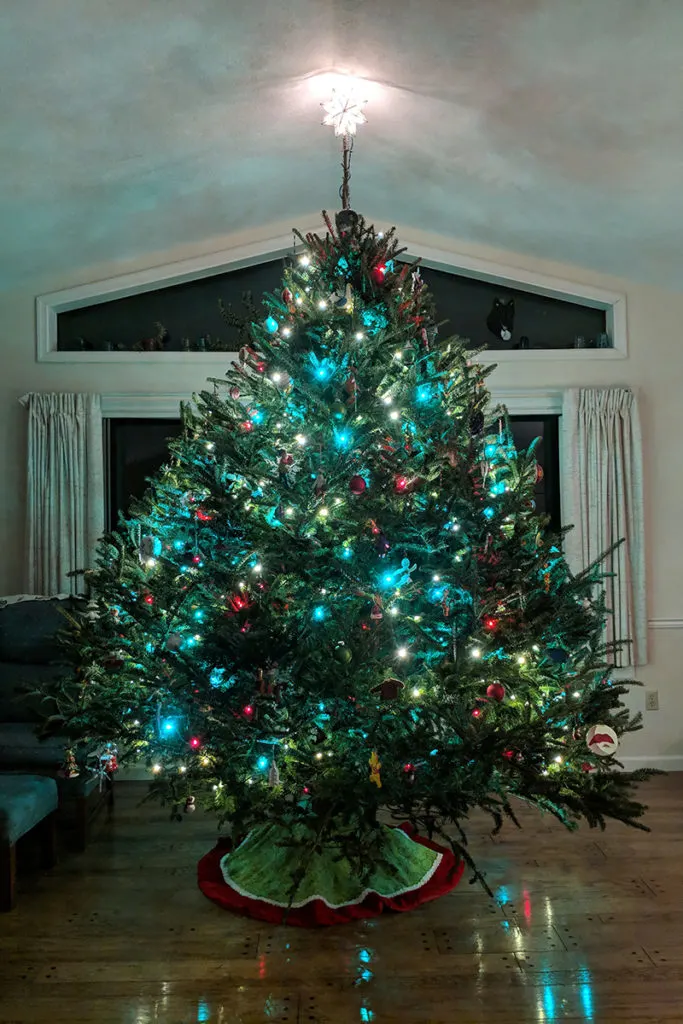
We’re going to discuss all the reasons why fake trees deserve coal in their stockings and why real trees deserve to be a part of your Christmas celebration.
9 Reasons Real Christmas Trees Are Better Than Fake
1. Getting the tree is part of the fun
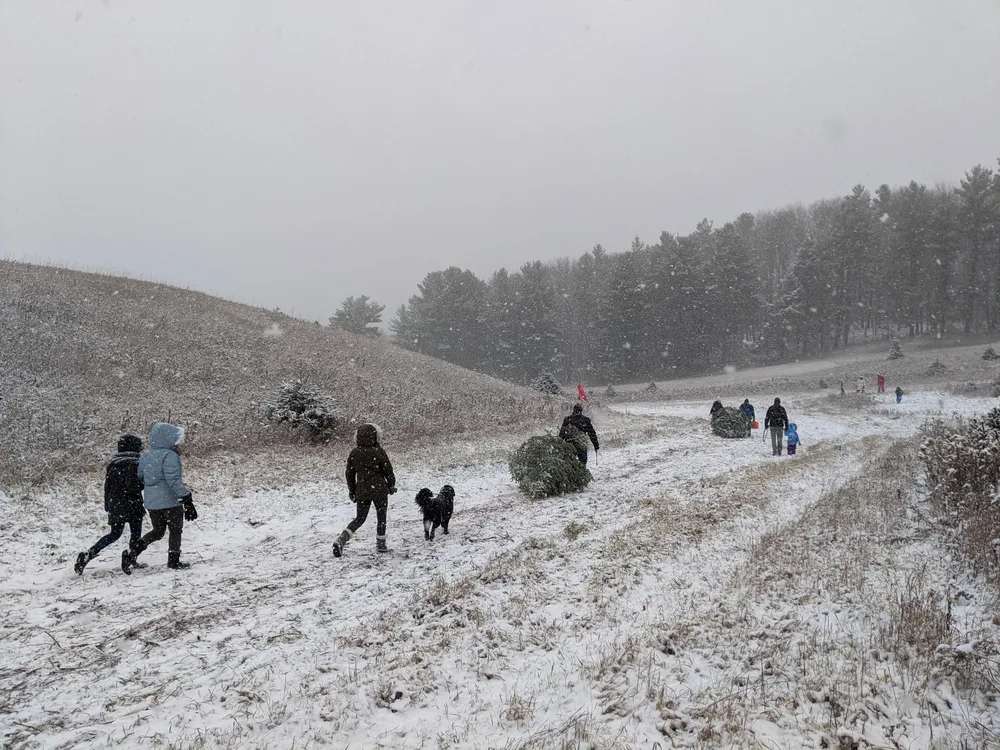
Imagine, if you will, a cozy little scene where the dad announces at the dinner table, “We’re going to get the Christmas tree tomorrow.” Mom smiles, and the kids exchange excited glances. Little Timmy exclaims, “Hooray!” Little Suzy whispers,“I can’t wait.”
The next day the family puts on their hats and gloves and tromps down to the basement to unearth the artificial tree from some dank corner behind the washing machine.
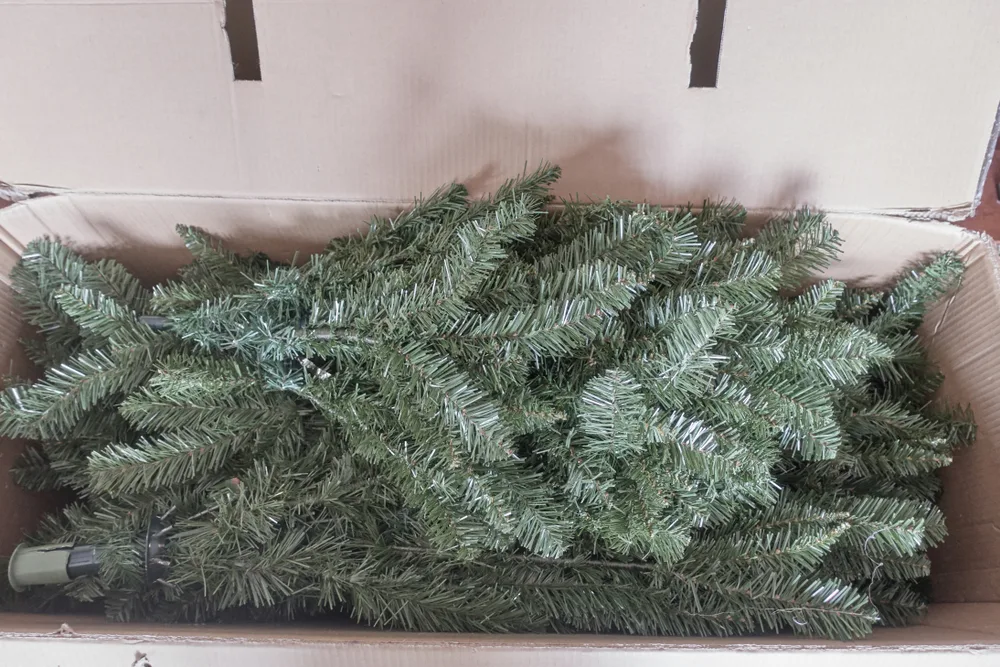
There’s a reason you never see this scene in a Hallmark Christmas movie.
Getting the tree is part of the fun of having a real one.
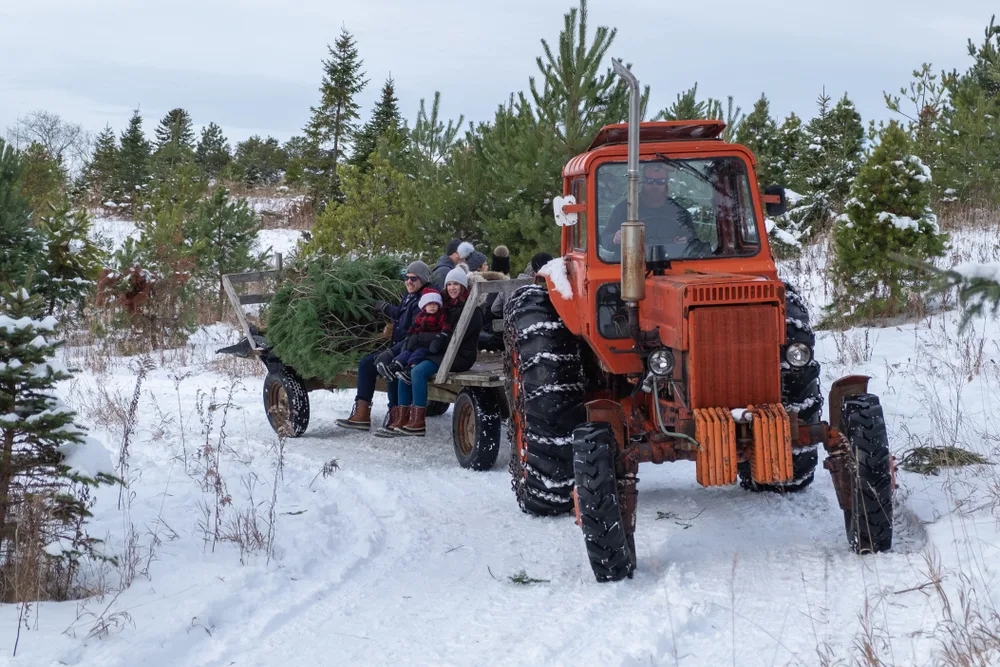
Especially if you’re one of those families that can’t get a tree without an argument of some sort.
“It won’t fit in the car, let alone the living room.”
“I told you we should have brought the truck.”
“I’m freezing; we’ve looked at hundreds of trees, just pick one!”
Some people drive to a favorite tree farm they’ve been going to for years, while others head to the Christmas tree lot in front of their favorite hardware store. Wherever they go, it’s an excursion, and it goes part and parcel with the festivities of the season.
2. Support a Local/Small Business
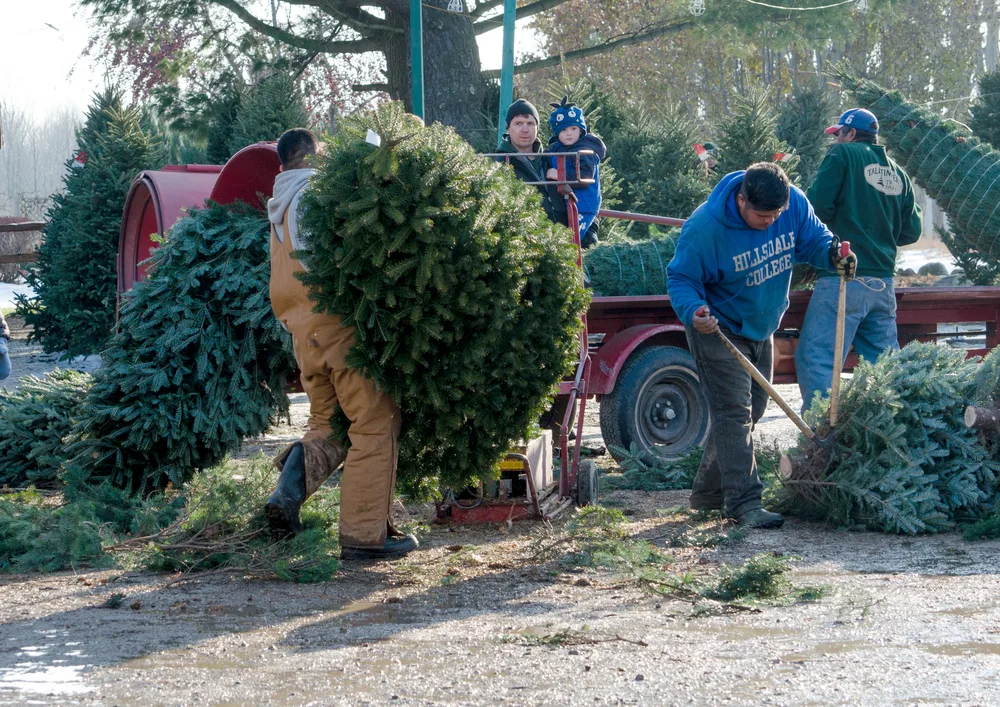
As I mentioned, many people choose to purchase their tree from a Christmas tree farm.
For some folks, spending their hard-earned paycheck locally is important to them. As more of our purchasing is online and we import more and more products from overseas, there’s been a grassroots focus to shop small and locally over the past few years.
I can’t think of a better way to support a small local business this time of year than by purchasing a Christmas tree from a local Christmas tree farm. Not only does this help your local economy, but it helps reduce your family’s carbon footprint, all while building treasured memories.
3. Fake Trees = Carbon, Carbon, Carbon
Speaking of importing products from overseas. According to the Nature Conservancy, nearly 10 million artificial trees are purchased every season in the U.S. alone. (Do me a favor and go back and reread that sentence.) And about 90% of those trees are imported from China. That’s a lot of resources and emissions to get those trees here. Talk about a massive carbon footprint.
4. Polyvinyl Chloride and Other Fun Chemicals
Let’s talk about that carbon footprint just a bit more, specifically what artificial Christmas trees are made of – plastic. And most are made from a type of plastic called PVC, or polyvinyl chloride.
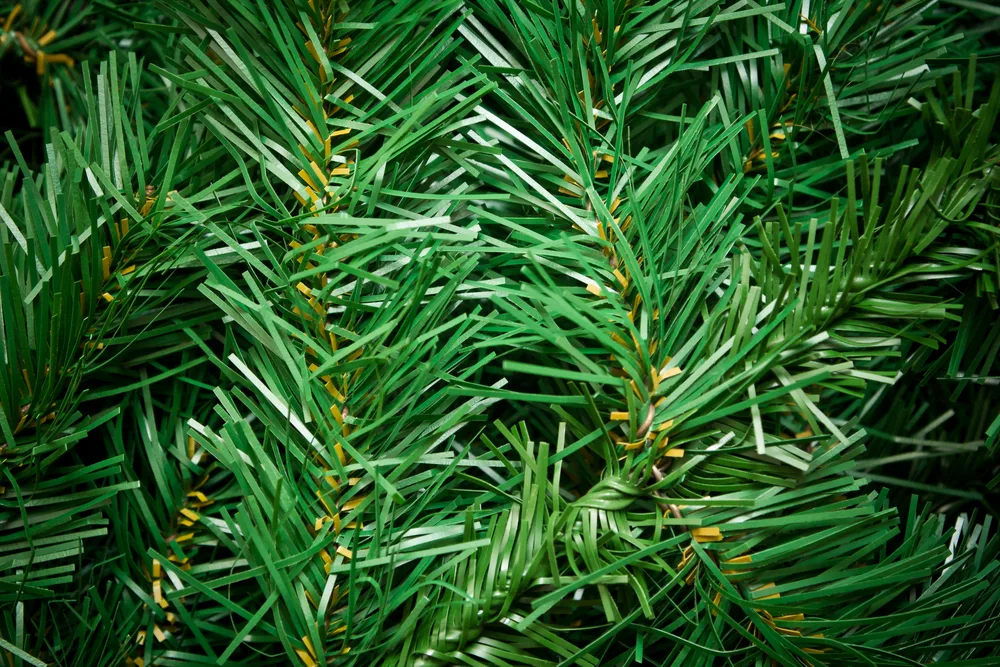
As far as plastics go, this stuff isn’t great. A quick Google search, and you will see PVC is packed with all kinds of known carcinogens. Especially the unregulated stuff used to make Christmas trees.
Even more exciting, lead is used as a stabilizer when making PVC, which breaks down into lead dust with repeated use. Chances are, if you’ve got an artificial Christmas tree, it’s got a tag right on it warning of the dangers of lead poisoning.
“Alright, little Timmy, put on your gloves and respirator so you can help decorate the chemical, er, I mean Christmas tree.”
5. Ethical Considerations
If you find yourself suddenly hesitant about decorating your artificial Christmas tree, perhaps you should take a moment to think about the ethical implications involved in their manufacture.
There’s a reason Walmart can sell you a 6’ artificial Christmas tree imported from China for only $45. It’s not just your family that’s exposed to the chemicals found in those trees. Historically speaking, low prices on imported products lead back to workers who are paid a pittance and work in horrific and unsafe conditions.
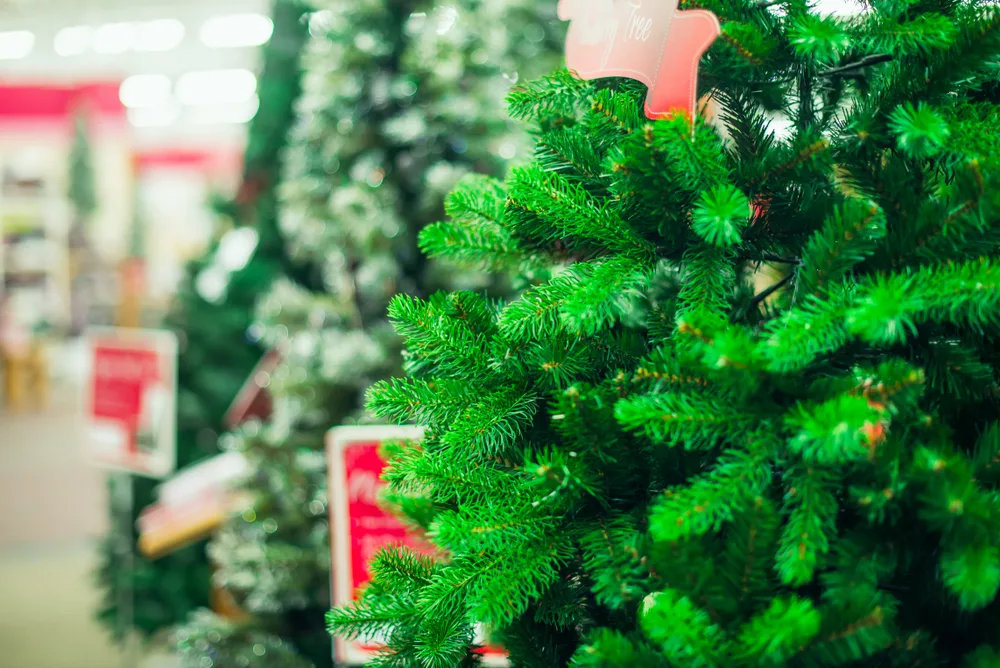
6. Fire Hazard
Many folks site fire safety as a reason to purchase an artificial tree. However, you aren’t coming out ahead. Because PVC is highly flammable (yes, you read that right), artificial trees are coated with chemical flame retardants. And every year you use that tree, it gets dustier and dustier, making it a fire hazard even with the added flame retardant. Pre-lit trees are at a greater risk of catching fire due to aging wiring.
To be fair, letting a real Christmas tree dry out is also a fire hazard; this is why it’s so important to check your real tree and water it regularly. Perhaps in this one metric, we’ll call it a draw.
7. Disposing of an Artificial Tree
If you thought the above was bad news, I hate to say it, but it’s about to get worse. Artificial Christmas trees aren’t recyclable.
Yup, that means more plastic in the landfills.
Now think about the 10 million fake trees purchased every single season and how many of them last more than a few years. If you buy a pre-lit tree, chances are it won’t last more than two years before the lights on it go.
That’s a lot of Christmas trees sitting in landfills for a very, very long time.
Aren’t you glad you’re reading this cheery article?
I could probably stop right here. We’ve covered enough to show just how bad artificial trees are. Come on, even the Grinch wouldn’t touch one with a thirty-nine-and-a-half-foot pole.
But I don’t want to end on a sour note.
No, dear reader, as I said initially, I want you to be excited about having a real Christmas tree this year. Real trees are awesome! Here are some facts about real Christmas trees that will restore your holiday spirit.
7. A Real Tree Can Fit in Even the Tiniest Spaces
A real Christmas tree is an excellent choice for those living in a small space. Studio apartment dwellers rejoice!
You can choose a tree that’s exactly the right size for your home. Heck, you can even get a live 8” dwarf spruce if you’re tight on space.
And when the holiday season is over, you don’t have to figure out where to store a bulky artificial tree.
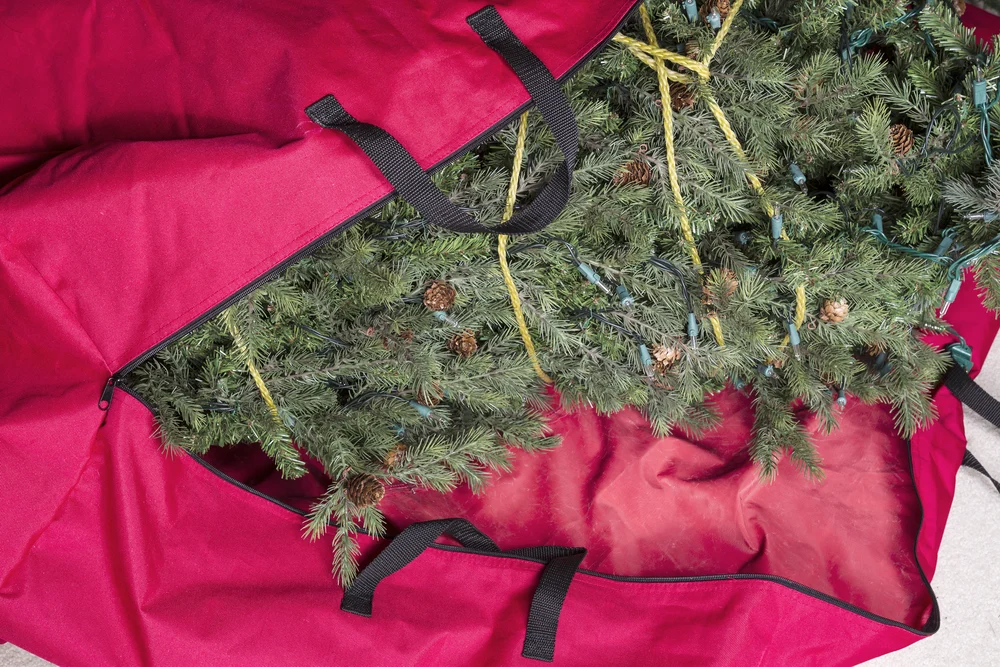
8. Real Christmas Trees Are Good for the Environment
Yes, it’s true. Choosing a real tree is so much better for the environment than its plastic counterpart.
But Tracey, what about deforestation?
I’m so glad you asked. Purchasing a real Christmas tree leads to reforestation. The trees come from dedicated Christmas tree farms. Some are huge, covering thousands of acres and servicing many towns or nearby cities. Others are small family-run businesses.
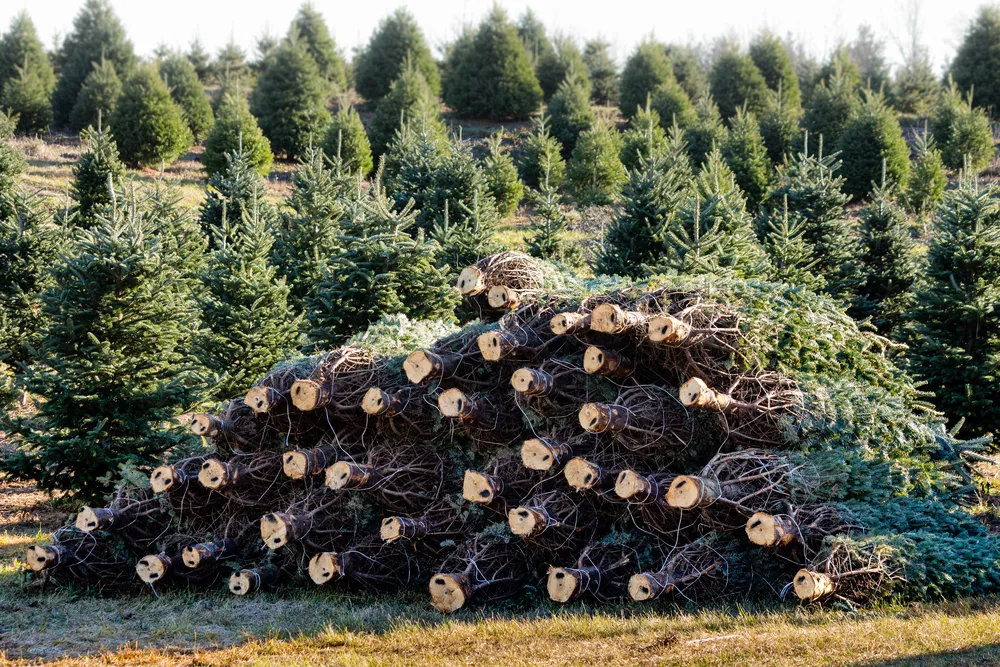
But all have dedicated land just for growing trees. You won’t find a slew of mafia-type lumberjacks out there hacking down trees in the middle of the night in some pristine forest.
According to the National Christmas Tree Association, farms plant about one to three new trees for every one cut down. Because Christmas trees are a renewable resource and take around ten to twelve years to grow to maturity, there are always more trees being planted than being cut down on a Christmas tree farm.

These Christmas tree “forests” provide a host of fantastic environmental benefits.
The trees help to stabilize the soil by preventing erosion. And most evergreens happily grow in soil where other crops won’t.
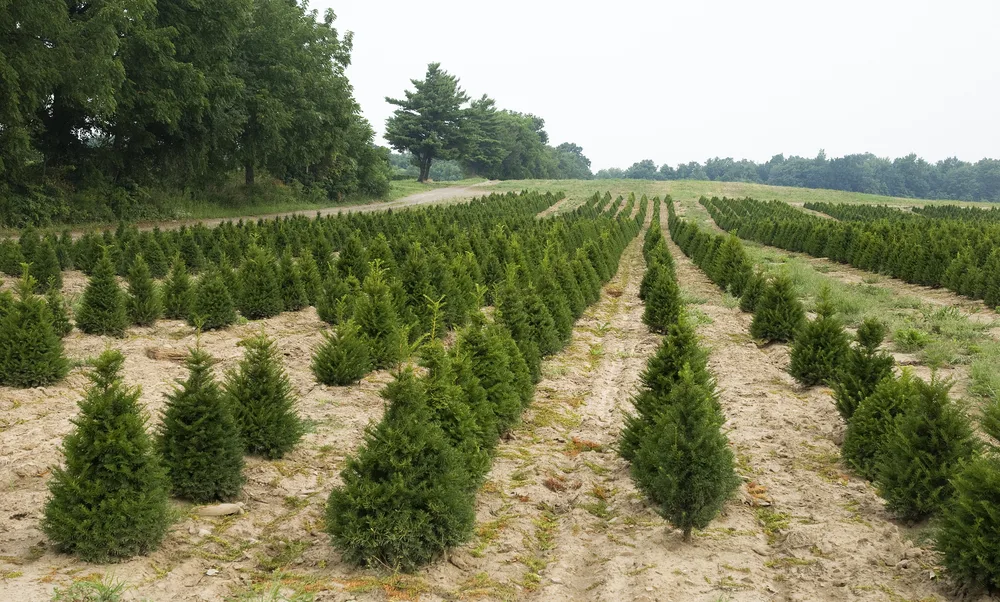
Instead of a farm filled with methane-farting cows, you have a farm that is actually reducing greenhouse emissions. Evergreens are excellent carbon scrubbers. A Christmas tree farm is an oxygen farm.
And these farms host local wildlife, providing a habitat for all kinds of animals.
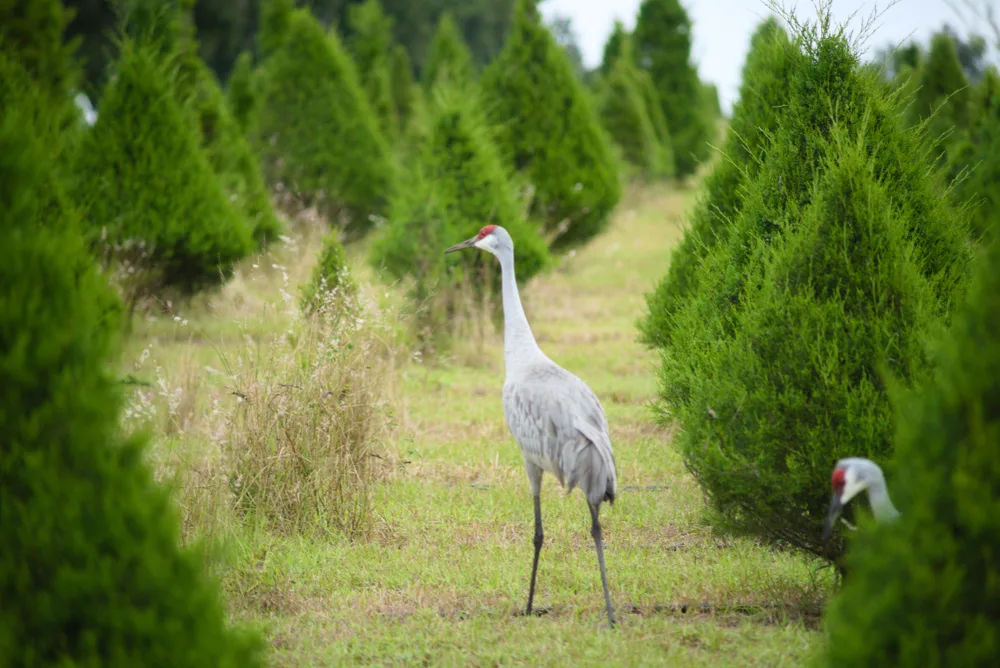
By cutting down Christmas trees each year, we are encouraging a healthy environment. For forests to grow and continue to be the carbon scrubbing powerhouses they are, they need to be managed responsibly. Thinning them is part of that process. Remember, those newly planted trees need room and nutrients to grow too.
9. Help Manage a National Forest
In keeping with properly managing our natural resources, the National Forest Service sells Christmas tree permits. The National Forest Service allows you to purchase a Christmas tree permit, giving you permission to cut your own Christmas tree from designated areas within participating national forests.
Yes, that’s right, your Christmas tree could come from the Monongahela National Forest or the Umpqua National Forest.
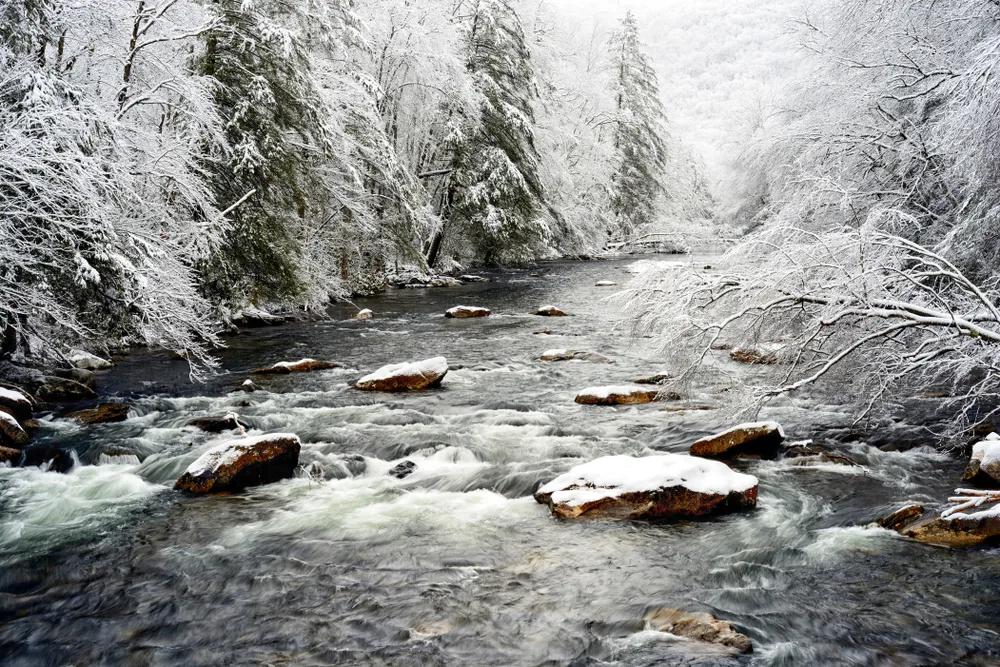
I had no idea this was even a thing. But what a wonderful tradition to start with your family. Can you imagine the story you would get to tell when asked where you got your beautiful tree?
The permits are very reasonable, too, ranging from $5-$10 per tree, depending on location. And there are tips for planning your tree-cutting excursion for each forest.
Amazing!
Finding a local Christmas tree farm
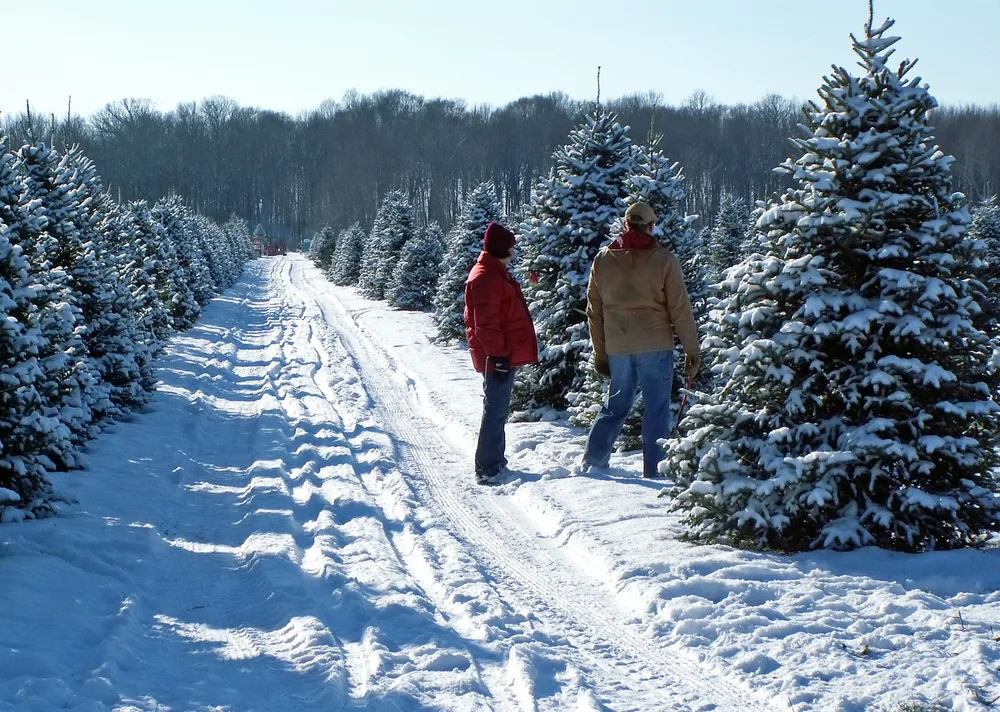
The easiest way to find a local Christmas tree farm is by word of mouth. Ask around, and you’ll probably have several to choose from.
Checking on Facebook and Google is always great too.
And of course, don’t forget the National Christmas Tree Association’s tree locator. Their locator not only allows you to find a tree farm, but gives you the option of sorting by tree farm amenities like gift shops, Santa, and wagon or sleigh rides.
If you decide to go with the cut-your-own route, don’t forget to save those extra pine boughs they remove to use to decorate your home. And here’s 8 other ways you can bring the outdoors inside for Christmas.
Okay, Tracey, you’ve convinced me; I’m getting a real Christmas tree this year. Now, what the heck do I do with it come February? (What? When do you take your Christmas tree down?)
Disposing of a Real Christmas Tree
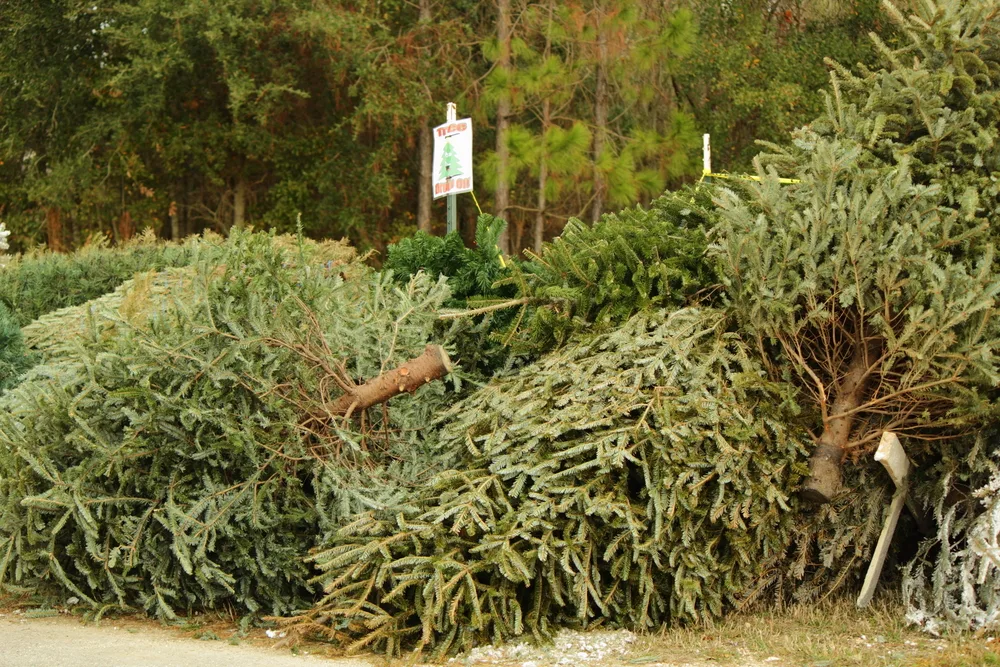
No matter which option you choose below, it’s essential that you remove all ornaments, lights, tinsel, and decorations from your tree before disposing of it.
If you have the means, the absolute best way to dispose of your Christmas tree is to drag it into the woods. A myriad of small forest creatures will make it a home and put it to good use while it decomposes. Of course, make sure those woods belong to you or that you have permission to leave your tree in them.
Another great way of disposing of your Christmas tree is to cut it into firewood. Pine is great for starting a fire. And it smells wonderful when it’s burning. We enjoy our Christmas tree even in the summer whenever we have a fire in the fire pit.
Many towns have a Christmas tree collection program already in place.
Most will have set dates when they will pick up Christmas trees curbside. The trees are then chipped and turned into mulch, which is usually made available to residents for free or at a reduced cost. Call your local public works office to find out what your town does.
Search for a local non-profit that collects trees for recycling. Sometimes conservation or wildlife rehabilitation centers will pick up (or have you drop off) your Christmas trees to be used as wildlife habitats. Some scouting troupes will even pick up trees to be recycled for a small donation.
Wrapping it Up
(Did you seriously expect a pun-free post?)
There are drawbacks to real Christmas trees as well. Many people suffer from allergies and can’t have a real tree in their home. Real trees are sprayed with pesticides, and while there is a growing movement to go organic among Christmas tree farms, it’s slow going. And those gorgeous white twinkle lights I put on my tree every year have the same warning tag about lead on them as your fake tree.
Real trees are messy and require daily care to keep them safe and looking nice. I’m always covered in sap once I get the tree set up and decorated, and let’s not even talk about the pine needle explosion that happens when you take it down for the season.
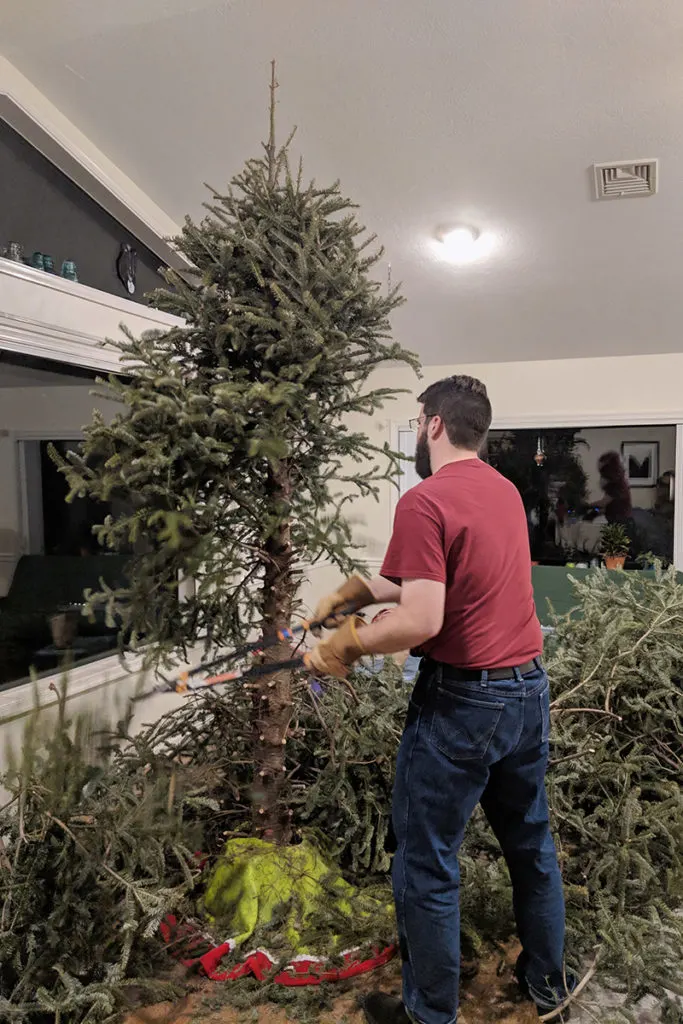
It’s easy for me to paint the fake Christmas tree as the sub-par choice in this scenario because of my overwhelming love of real trees, but the evidence is there to make my case.
All jokes aside, the carbon footprint and the conditions of the factories where artificial trees are made warrant some thought before a purchase is made.
At the end of the day, this is a decision about putting a tree in your house. Which, when you get right down to it, is a pretty silly tradition. How to celebrate a holiday in your home always comes down to personal preference.
So, this December, remember this – whichever you choose for your holiday celebration, enjoy it! Especially the moment when you put the star on top.
Oh, you have an angel? Well, isn’t that…nice.
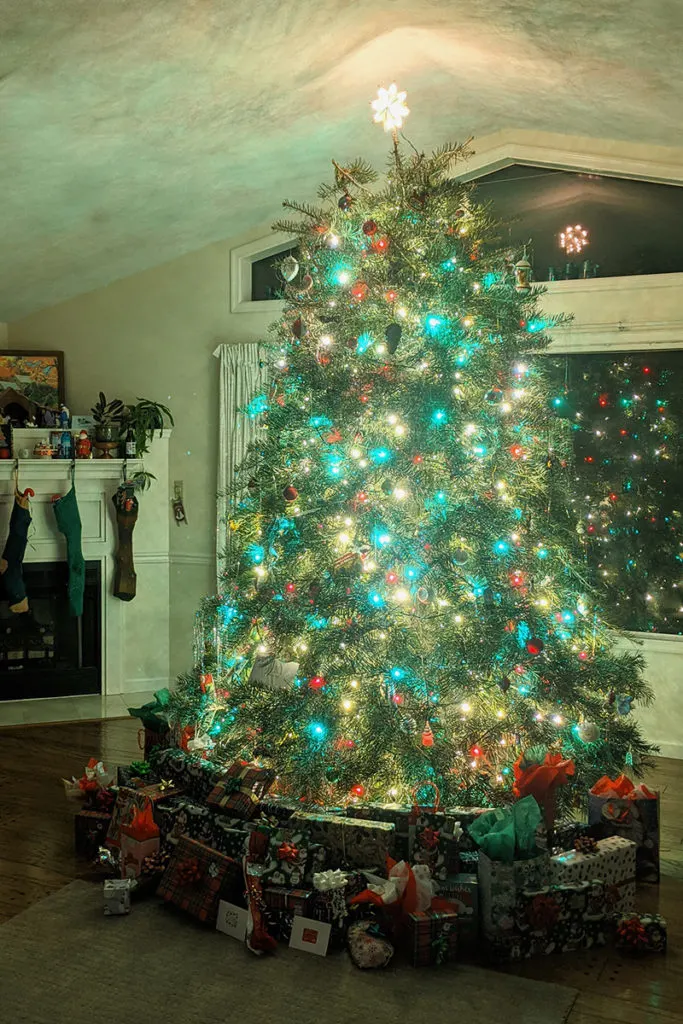

Get the famous Rural Sprout newsletter delivered to your inbox.
Including Sunday musings from our editor, Tracey, as well as “What’s Up Wednesday” our roundup of what’s in season and new article updates and alerts.

